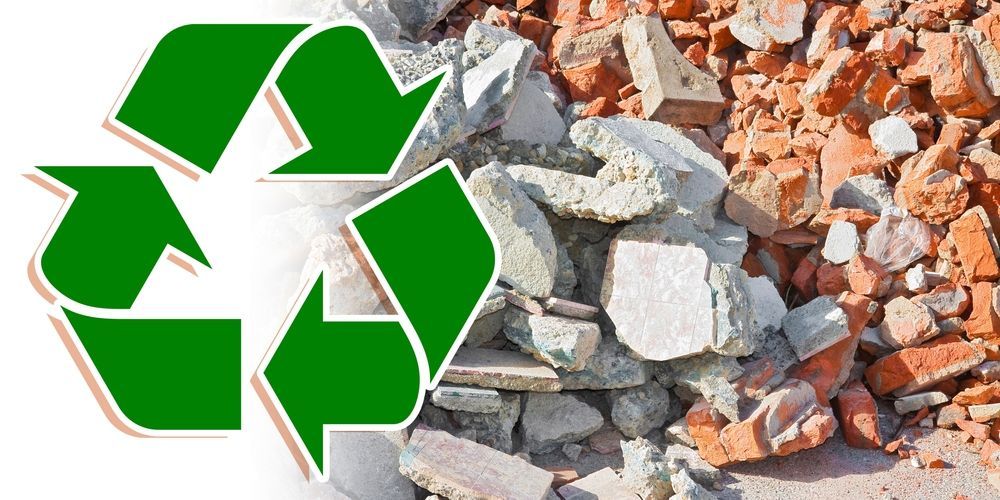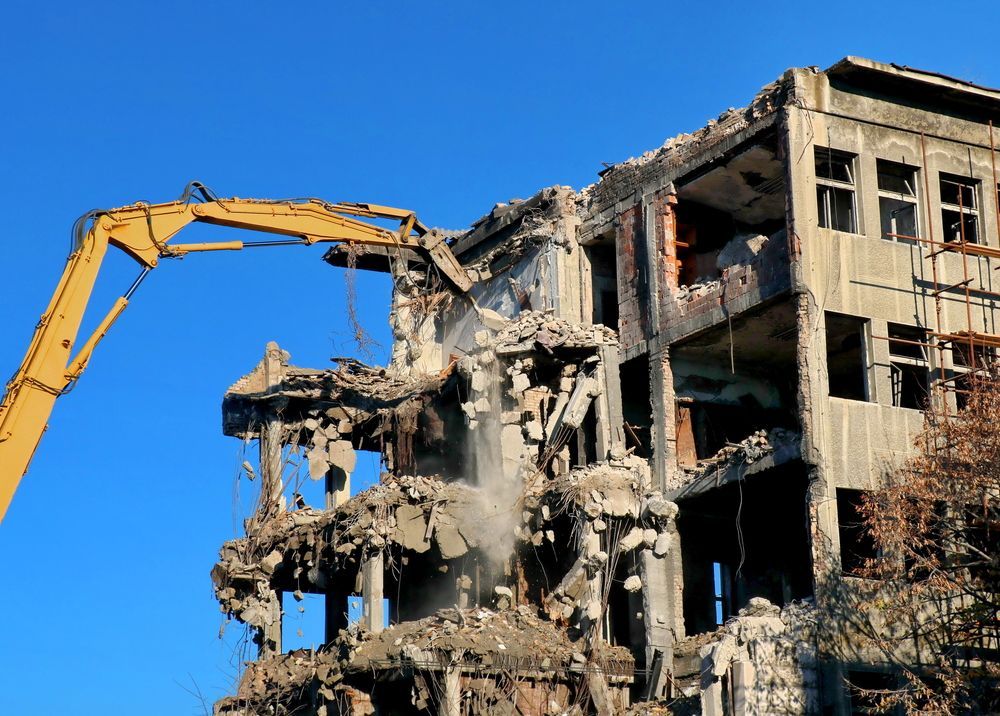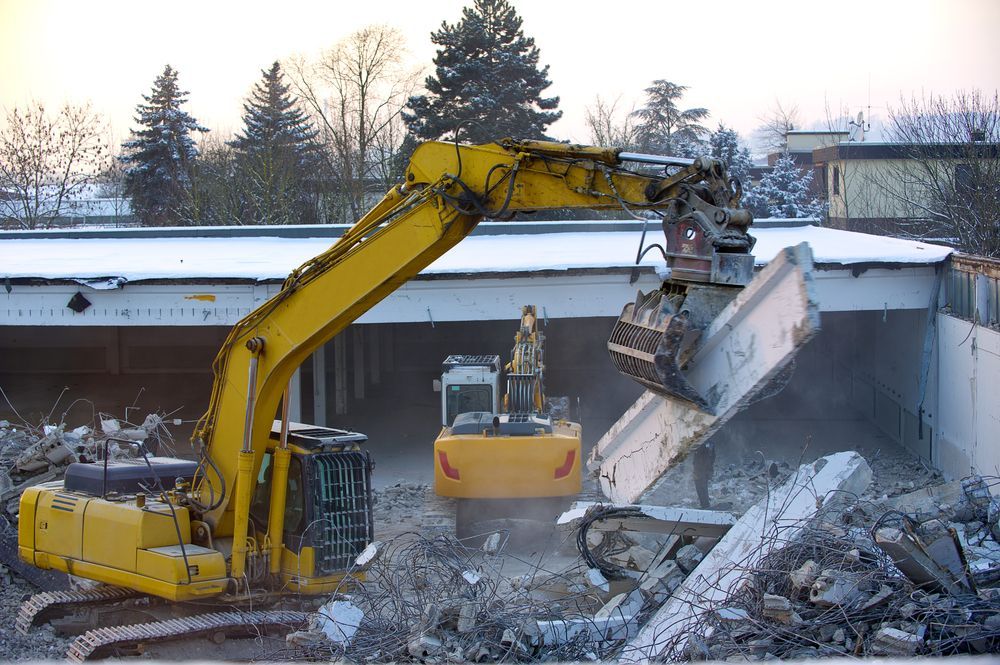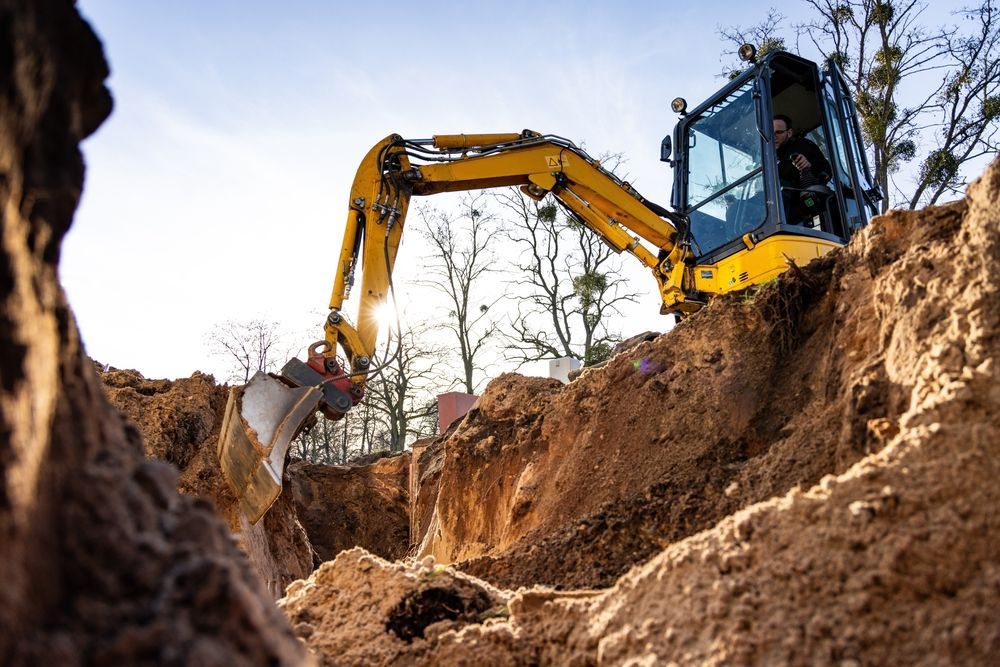Written by: Alpine Demolition

Concrete is one of the most popular byproducts of construction. In fact, it's estimated that some 4.25 billion metric tons of it are produced globally each year and that 900 billion tons have been produced since the Industrial Revolution. Noting all this, it probably shouldn't surprise you to learn that concrete also accounts for a significant amount of waste - and it's becoming increasingly complicated to send concrete waste to the landfill.
It begs the question: Can concrete be recycled? The answer is "yes" and the benefits of doing so are plentiful. Read on to learn more or
contact Alpine Demolition today for additional information.
What Happens to Concrete After a Demolition?
One of the first things we must do when taking on a new construction project is destroy the existing structure. Especially in industrial or multi-use areas, this process generally involves concrete demolition. Concrete is found not just in the foundation of a previous structure, but also in surrounding sidewalks, driveways, parking lots, and poles. This concrete has to be broken up before it can be removed. The material gets crushed and hauled off. Where it goes next makes all the difference in terms of its environmental impact.
Can You Recycle Concrete and Reuse it?
Once it’s been removed from the demolition site, there are a few choices to be made regarding what to do with the material. Namely, the debris can either be disposed of in a landfill or recycled. Recycling concrete reduces the growing problem of overfilling landfills, and it also lessens the need for another high environmental impact activity: mining gravel.
How Is Concrete Recycled?
The most common method of recycling concrete is concrete crushing, which involves breaking down large pieces into a fine aggregate. Crushed concrete is commonly used as a base stone for roads, building pads, and parking lots. It may also be used as backfill material.
Once the large pieces of concrete are crushed down into small, finer pieces, the aggregate must be screened to remove dirt, solids, and more to ensure purity. This step often happens at a special recycling facility. Depending on the aggregate, other methods may be used to remove impurities from the mix before it can be reused. Crushed concrete is often separated into large and small piles of aggregate to make it easier to repurpose once it reaches that step.
Equipment Used in Concrete Recycling
Concrete must be crushed with industrial crushing machinery, such as a crusher or a shredder. Various types of crushers and shredders can be used to crush concrete. For smaller projects, a portable shredder may be the best option. Larger projects may administer more complete systems with conveyors and jaws to streamline the process from demolition to concrete crushing to the final use of aggregate on site.
Contact Alpine Demolition today to learn more about the equipment we'll mobilize on-site for concrete crushing purposes.
Benefits of Recycling Concrete
The benefits of recycling concrete are far-reaching, both when it comes to helping the environment and the specific demolition project. Here's a closer look at some of these benefits:
- Cost savings: It's expensive to dispose of construction-related debris, like concrete, in landfills. In some municipalities, it costs 25 cents per ton per mile to take concrete to a landfill. In addition to these project costs, landfills are becoming increasingly regulated. In some areas, it can be even more expensive to dispose of certain materials, concrete included.
- Conserving landfill space: The amount of concrete waste generated on many demolition projects is significant. If all concrete waste was taken to the landfill, it would account for a significant volume and contribute to overcrowding. Beyond just leading to overcrowded landfills, excess concrete buildup could have an impact on the future waste disposal of the specific community where you're working. For instance, municipalities may have to ship waste to landfills outside the city limits, which may cost more and have a trickle-down effect on any residents of said communities.
- Environmental benefits: Crushing concrete and reusing it doesn't just help conserve landfill space, it also saves energy on the effort that would be necessary to mine, process, and create virgin concrete. Recycling helps conserve natural resources as well as the energy that's required to create a new product.
Contact Alpine Demolition today for more information on the benefits of concrete crushing and recycling.
What Can Recycled Concrete Be Used For?
We already noted how crushed concrete is commonly used as a base for new roads, parking lots, building pads, and as a backfill material. But there are various other uses for the aggregate after product. These uses include:
- In landscaping: If the concrete is crushed down to a fine enough aggregate, it can be used in landscaping mulch as an alternative to gravel.
- In utility trenches: Utility trenches are often covered with gravel to assist drainage. Like serving as an alternative to gravel in landscaping, concrete aggregate may be used as an alternative to gravel in these trenches.
- In streams: Concrete aggregate is also often placed along stream banks to help prevent erosion. It may also be used on ocean shorelines to help create a foundation for coral reefs. It's important to note that concrete used for such purposes must be more carefully sourced and purified, especially when it comes to its chemical composition.
Where to Take Your Concrete For Recycling
In adherence to Illinois law, on-site concrete crushing with a contractor like Alpine is both a matter of convenience and a legal necessity. Illinois regulations mandate that all concrete crushed during demolition activities must stay on-site for future development.
In adherence to Illinois law, on-site concrete crushing with a contractor like Alpine is both a matter of convenience and a legal necessity. Illinois regulations mandate that all concrete crushed during demolition activities must stay on-site for future development.
Alpine's on-site crushing services ensure compliance with Illinois laws. Once crushed into aggregate, further processing occurs on-site, ensuring the removal of impurities for reuse within the same project.
Additionally, Alpine follows Cook County and City of Chicago regulations which govern off-site transportation of concrete, requiring it to be taken to licensed recycling facilities or CCCD (Clean Construction or Demolition Debris) facilities.
Adhering to these guidelines is crucial for contractors like Alpine, ensuring proper handling and disposal to mitigate environmental impacts and comply with local laws. Such practices contribute to sustainable waste management and uphold environmental standards within the region.
Alpine Demolition Concrete Service
Alpine Demolition makes demolition clean-up hassle free and affordable with our high impact
concrete crushing services. Instead of letting the old concrete byproduct from a construction site demolition pile up around a job site or in a landfill, Alpine Demolition seeks to help you make something useful from your left-over concrete. No amount is too small or large: from an outdated concrete patio slab in your backyard to the massive amounts of concrete from a commercial building demolition, our concrete crushing services have you covered.
Contact Alpine Demolition Today
Concrete is typically crushed to CA6 or PGE standards, and reused concrete is quickly becoming a popular part of the construction process among engineers and Department of Transportation agencies. Our concrete crushing service delivers significant savings to our clients, and we are a certified DBE operation for concrete crushing. Not only will we handle all the permits and paperwork, we’ll also come straight to your site to get the job done, making the process as easy as possible for you. Ready to get started?
Contact us online or call us today at (630) 761–0700 to discuss your project and your needs.
3515 Stern Ave, St. Charles, IL 60174
(630) 761-0700
Office Hours
Mon - Fri: 8:00 am - 4:30 pm
Sat - Sun: Closed
Website imagined and executed by RivalMind.
Quick Links
Stay Connected with Alpine:
Sign-up to receive regular news updates from Alpine Demolition.
Newsletter Email
We will get back to you as soon as possible.
Please try again later.




